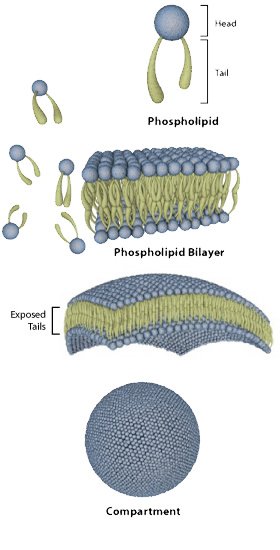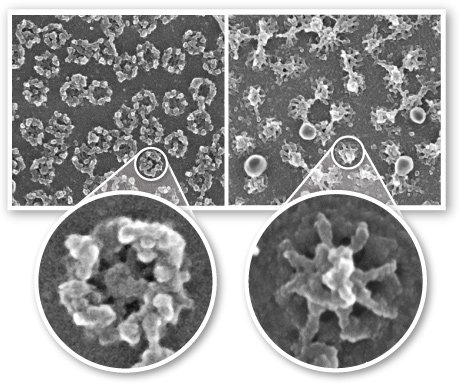Membranes Define Compartments
Membranes organize proteins and other molecules enabling the cell to run much more efficiently than if everything were floating freely. Mitochondrial membranes, for example, keep protein assembly lines together for efficient energy production. And the lysosome safely holds enzymes that would destroy essential proteins if released into the cytoplasm. Membrane-enclosed vesicles form packages for cargo so that they may quickly and efficiently reach their destinations. In this way, membranes divide the cell into specialized compartments, each carrying out a specific function inside the cell.
Real life complexity inside an insulin-producing pancreas cell. Cells like this contain thousands of membrane-enclosed compartments. Each color represents a structure with a unique function and composition. mage courtesy of Dr. Brad Marsh, Institute for Molecular Bioscience, The University of Queensland, Australia. © 2001 National Academy of Sciences, U.S.A. More about this image



